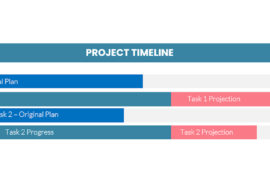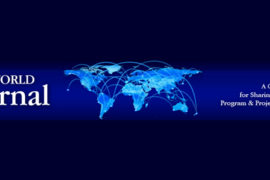 It’s a six-syllable word, I know. It’s this week’s topic of conversation however, thanks to a recent decision by the FASB. The Financial Accounting Standards Board is not the most reckless association on the planet yet we owe many of our own Canadian Generally Accepted Accounting Principles to their initiatives. They are the US Federal group of accountants who set accounting standards for companies all over the US. In June, the FASB decreed that intangible assets must be identified during the purchase of a company.
It’s a six-syllable word, I know. It’s this week’s topic of conversation however, thanks to a recent decision by the FASB. The Financial Accounting Standards Board is not the most reckless association on the planet yet we owe many of our own Canadian Generally Accepted Accounting Principles to their initiatives. They are the US Federal group of accountants who set accounting standards for companies all over the US. In June, the FASB decreed that intangible assets must be identified during the purchase of a company.
This category of assets has always been referred to as goodwill. With the shakeup of the technical sector this year, goodwill has become something that we’re all a little too familiar with. Goodwill is the difference between what the company’s financial balance sheet says the company is worth and what was actually paid for the company.
How is this possible you ask? Well, imagine a 10-year-old software company. It has 50 people in it and has grown through its own efforts, expanding by immediately reinvesting its own profits in its own growth. The company has done this by creating and the successfully selling 2 or 3 vertical market software products. Yet, when we look at the financial statements for this company, it might not look like it’s worth anything. The expenses for the firm have risen at the same pace as the revenues, eating profits for new staff, new equipment, new marketing efforts as the money became available. The company may have some money in the bank but the true assets of the company can’t be found in the financial statements. The valuable assets are the knowledge of the staff, the ongoing nature of the revenue stream, brand recognition, the client base and, of course, the software products themselves.
So why should anyone care? Well, in a technically oriented company, what is usually being paid for is knowledge. It’s been awhile since we spoke in any good terms about the movement to a knowledge-based economy but the FASB decision is, in my opinion a welcome one for the technical sector.
With all the mergers and acquisitions done in the past 2 years goodwill was the majority of what was traded. Companies were valuated at huge numbers not based on their balance sheet but rather a series of nebulous factors that no one felt compelled to identify. Being “first-out” carried huge advantages to valuation (ask pets.com) and the existence of growth meant that we could ignore profits for the foreseeable future (remember Amazon?).
There was, no doubt plenty of conversation and speculation about the intangible values in the cigar-smoke-filled back rooms where deals were made but no specific accounting of the value was ever required when the deal was done.
The FASB decision sets a trend for everyone in this industry. Now, the value of some of these intangibles will have to be identified. In particular the knowledge-base areas of the company to be acquired will have to be quantified in some way.
So, how do you go about valuating the efforts involved in high-tech? Any business owner who has been involved in a financing deal in Canada in the last 5 years can wince at this conversation. Financiers are in the business of buying low and selling high so they’ll point first to the book value of the company which almost always small. Software publishers generally take the opposite view. After all, they probably wouldn’t have started development on the products they’ve created if they hadn’t thought the result would be tremendously valuable to the market. Even if those products haven’t yet been released to the market and haven’t generated any revenue at all, they will perceive them as very valuable.
The truth lies somewhere in between of course. There are a few factors to consider for software and other high-tech manufacturers. Let’s tackle the easy one first; the commercial aspect. The revenue stream itself including existing and repeating clients is obviously key. It’s also not too difficult to identify the marketing expenses associated with a particular product line and most selling organizations have good records of the selling costs thanks to commission and sales bonus structures. These costs can help identify how much effort and money would be required to duplicate the results of the firm, a good indication of the value of what is being purchased.
Brand recognition may be important also. There are several accepted method of valuating a brand name but all of them involve some subjectivity. Trademarks is one of the areas to look at here, particularly registered trademarks and website addresses.
Next, however, is what should be the easiest and is often the toughest aspect of valuating technical efforts: the costs. First of all, there is the direct effort that was required to produce the product or products in question. This is often a labour oriented conversation but it might become critical down the line if you can’t identify what the relative labour involved in producing and selling a product was if it becomes very successful and a key element in a company purchase. Bear in mind that if you are on version 5, then the efforts to create versions 1 through 4 are relevant also (Taking into account some appreciation as you would do with any asset). A project-based corporate timesheet system may allow you to track these efforts task-by-task.
The R&D tax claim that many Canadian companies file each year is another method of quantifying the value of the research undertaken as part of any commercial effort but this also will require a task-by-task accounting.
Next, the value of the knowledge itself is critical to the valuation. Are there unique algorithms or methods of implementing the product line that can’t be replicated elsewhere? Valuating this is difficult but one way of doing it would be to estimate how much effort it would take a competitor to duplicate the efforts. Patents may be one of the methods of quantifying uniqueness here.
When you start thinking like this, you start looking at your business in a whole new light and I think that’s the point the FASB wanted to get across. You start looking at the knowledge base you’ve built up as though it’s an asset. Are you protecting that asset as well as, say the furniture in your office? Your furniture is probably insured and may even be protected behind an alarm system. Is it the same for your much more valuable knowledge? Are you backing up critical information off-site? (Not just your source code.) Are your employment agreements ensuring that employees cannot redistribute the critical information from that knowledge base to competitors upon their departure? Are you copyrighting your software code or applying for patents for firmware or hardware innovation?
The FASB is an American institution but thinking of the value of the knowledge in your own organization is universal.




